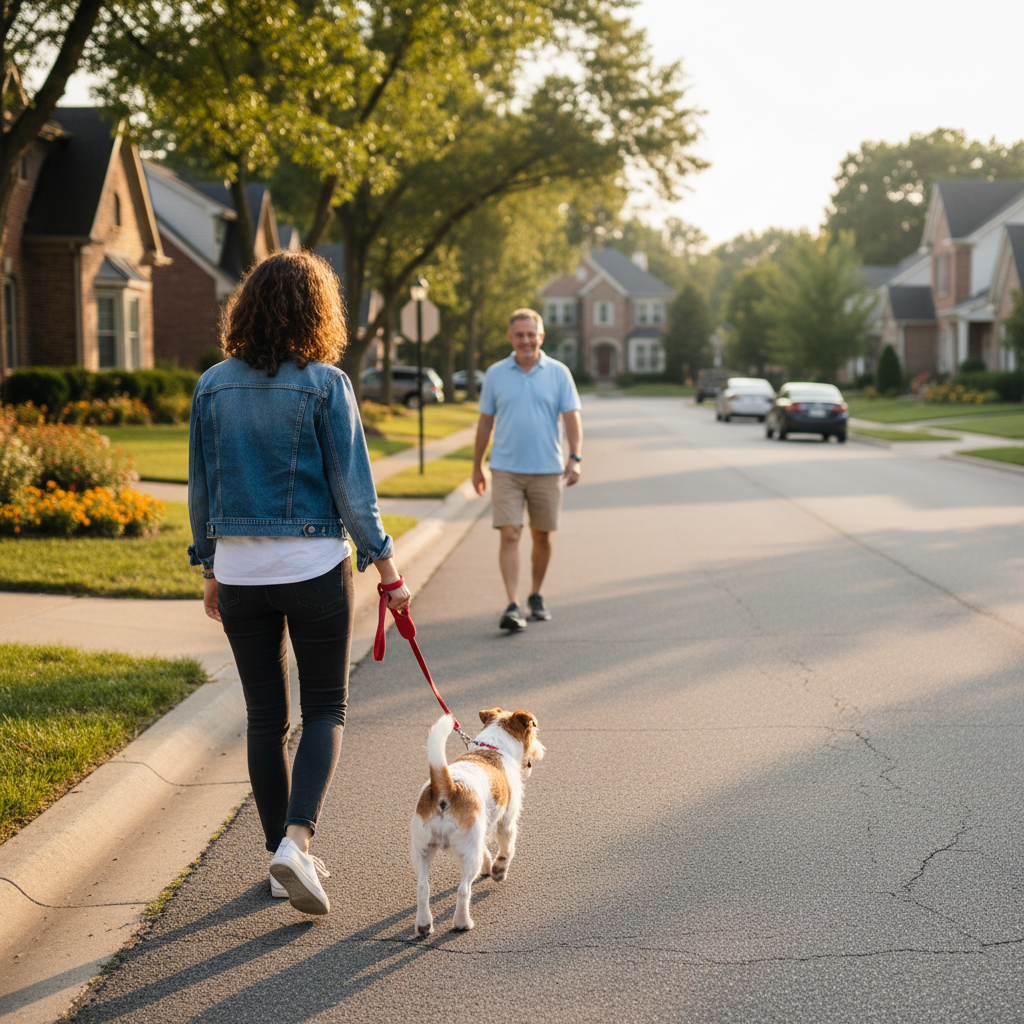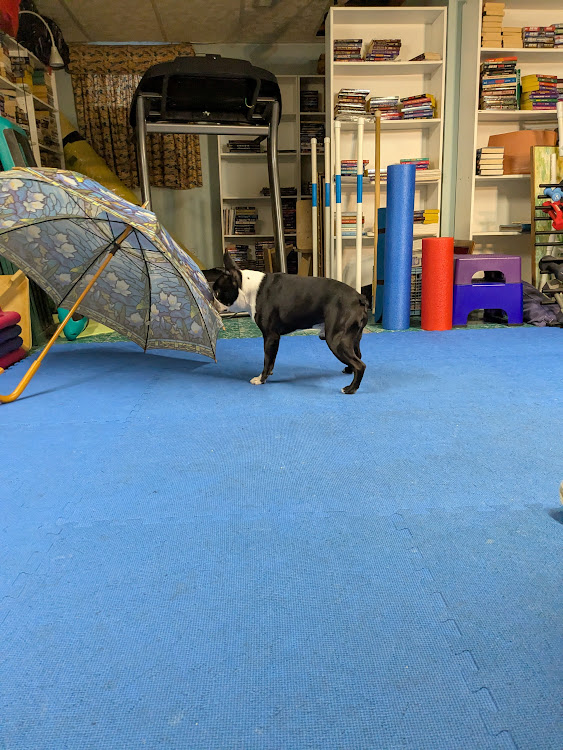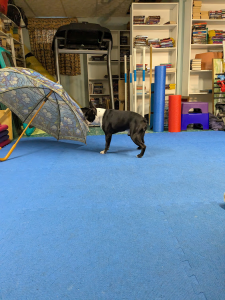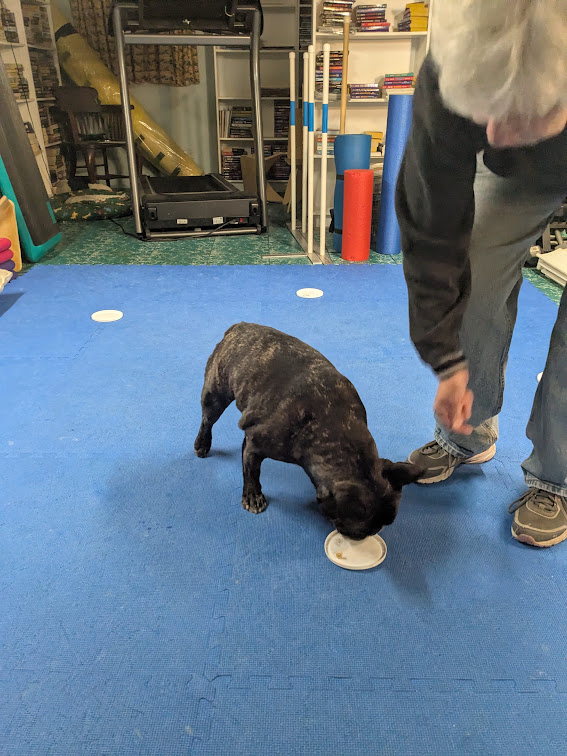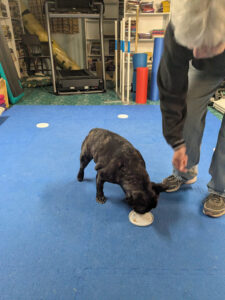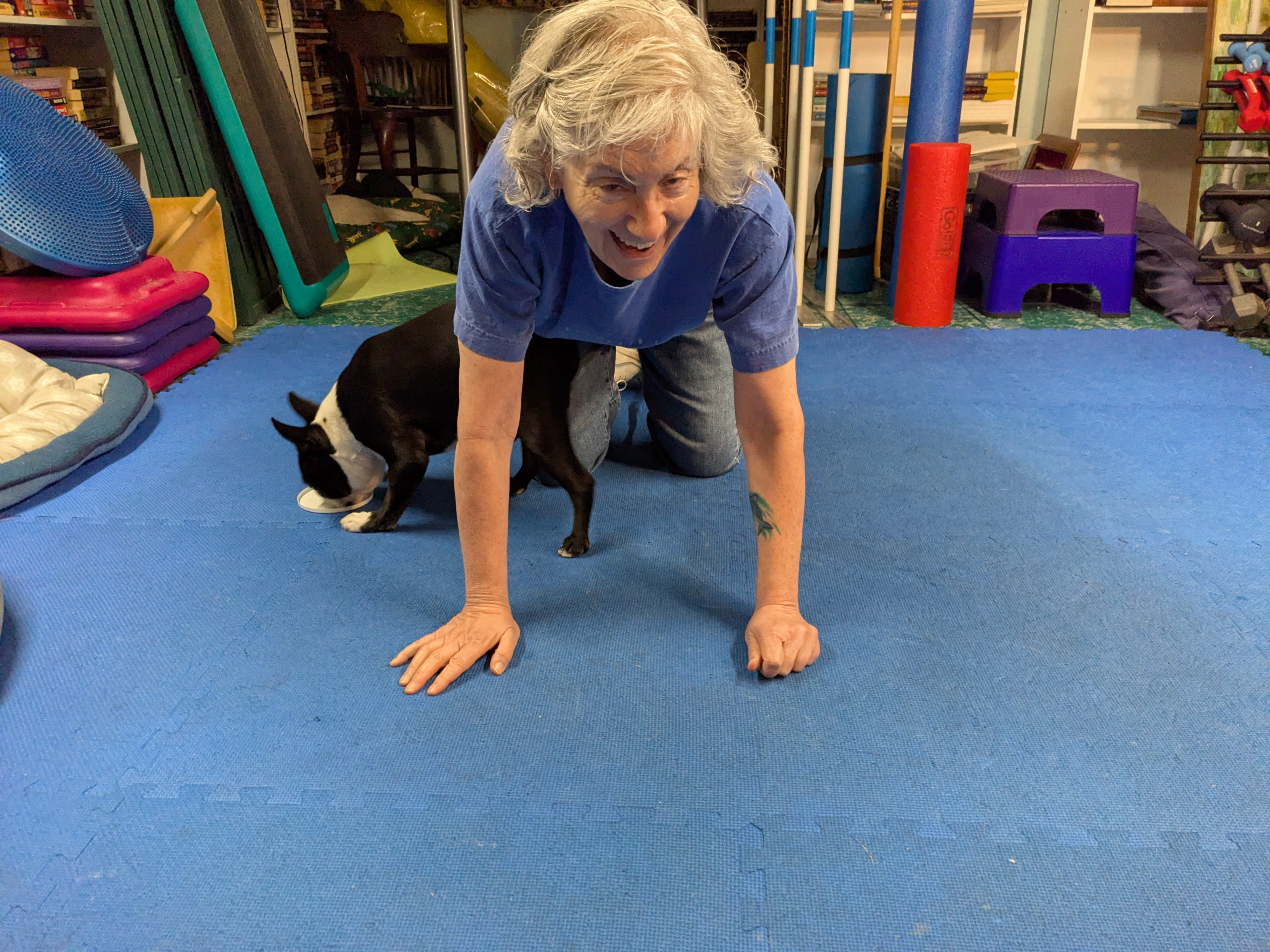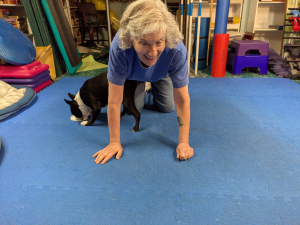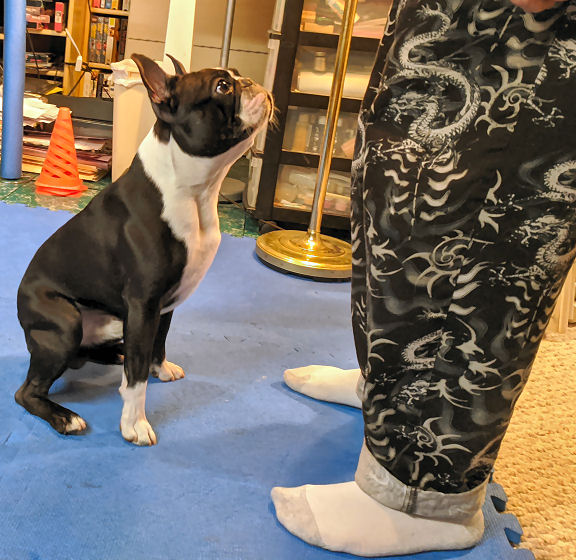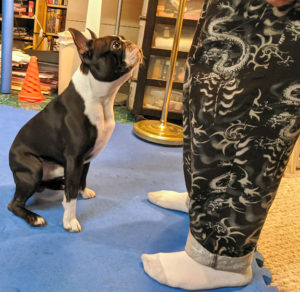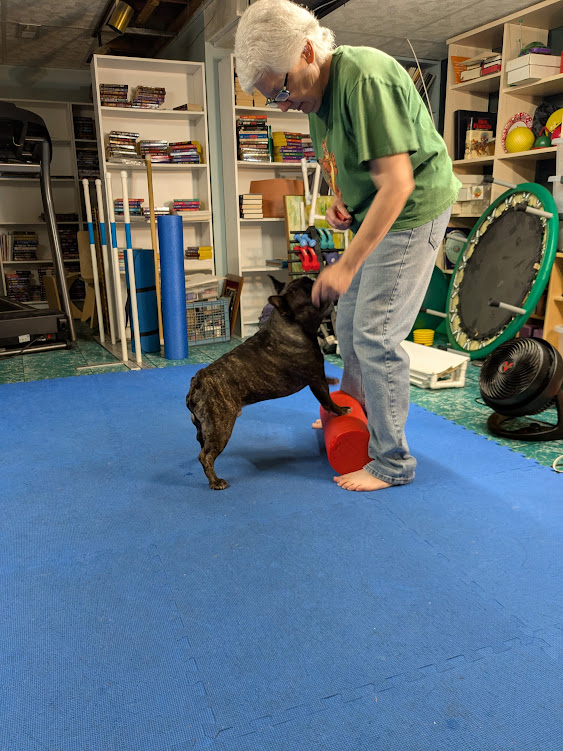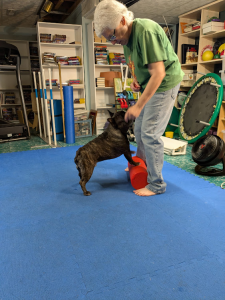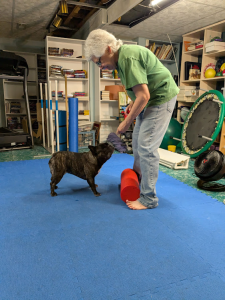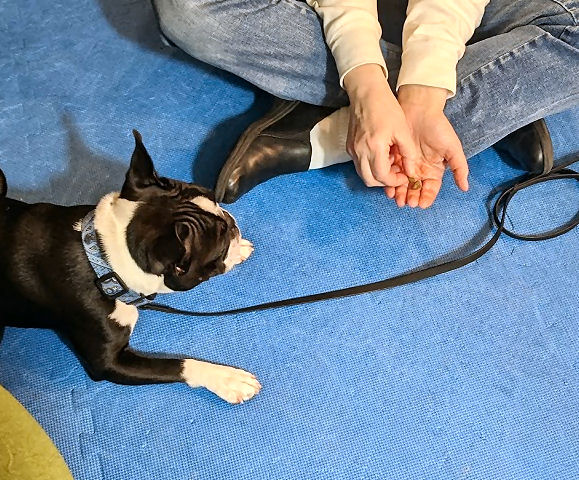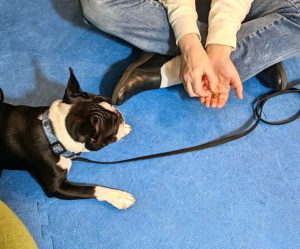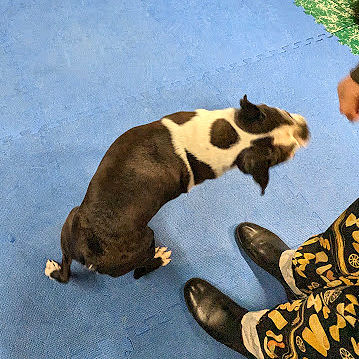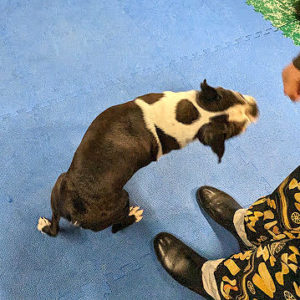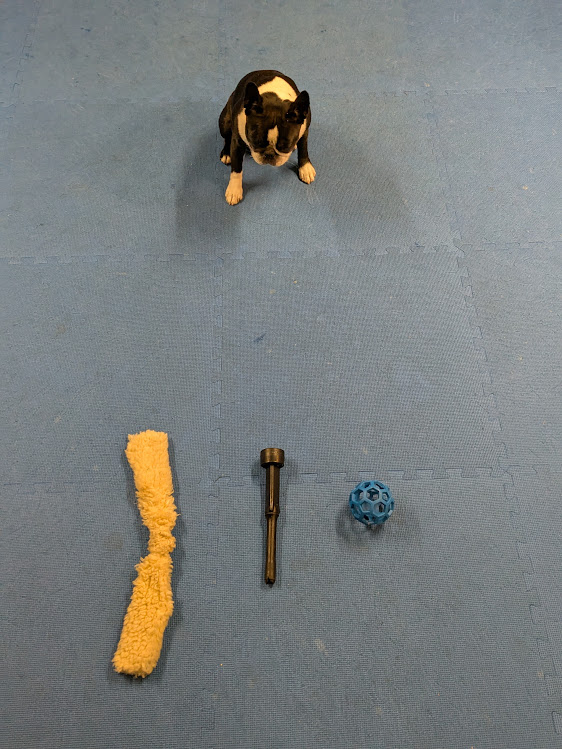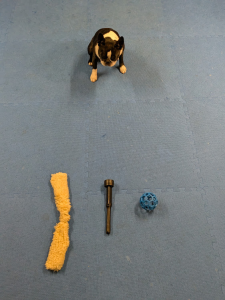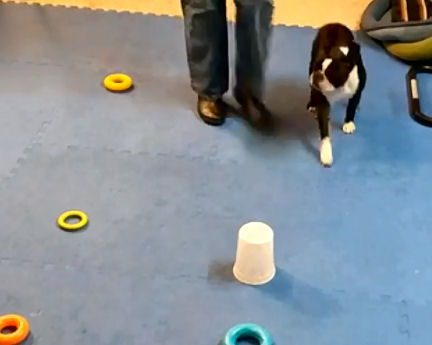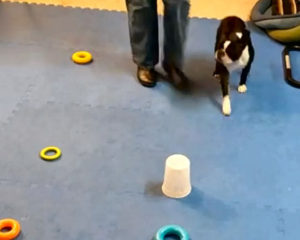Some dogs are people-oriented and love everybody. Other dogs love a select few and are indifferent to anyone else. And then there are dogs who actively dislike anyone outside of their family and friends circle. These dogs can be challenging to live with, difficult to exercise, and impossible to bring anywhere with you. These are the dogs who most urgently need Cookie People.
The last kind of dog is also the one that might get labelled as “reactive.” While they may react rudely to strangers or unfamiliar situations, please don’t call them reactive. That word is often used interchangeably with “aggressive,” and that’s not the reputation you want your dog to have. Instead, if you must call them something, try using “excitable.” It conveys the same message, without the negative layer of meaning.
Toning down the conversation
Your dog falls into the “excitable” category if they bark at people for no reason, pull toward (or away) from strangers, and offer anti-social behaviors in new situations. In most cases, it’s probably fear-aggression. The dog is trying to act tough so no one knows how frightened they are. But we’ll never really know why. Instead, it’s up to us to teach the dog how to greet the world calmly.
One of the best techniques for chiseling away at the fear wall is to enlist an army of “Cookie People.” This may be well outside your comfort zone, but it’s necessary for your dog’s wellbeing. It’s easy enough. Just stick a bag full of your dog’s favorite treats in your pocket, leash up your dog, and go face the unsuspecting public.
Confronting strangers
The goal is to convince your dog that people are harmless. That means getting out there and talking to at least one person every day. While it can’t be the same person all the time, you should, at least for the first day, pre-arrange the encounter.

Call a friend and arrange to meet them somewhere in your neighborhood at a specific time and place. The friend should know the “script” for your encounter, which looks like this:
You and your dog are walking in the neighborhood. Up ahead, you see the fake “stranger” headed in your direction.
When you are within a few feet of each other, you ask the “stranger” if he/she will toss cookies to your dog.
The “stranger” agrees. You ask him/her not to look directly at the dog, just please toss a few treats (at least four, as many as 10) on the ground close to your dog. While tossing the treats, have a chat with the stranger, both of you ignoring the dog.
When the treats are all tossed, you and your dog say “goodbye” and continue on your walk, as does your fake “stranger.”
Rinse and repeat
If your dog is visibly upset, or won’t eat the treats, don’t push it. Don’t let the dog get close to the other person. Until their excitability is resolved, there could be trouble if your dog jumps on someone or causes them to trip.
If the dog won’t eat the treats today, try again tomorrow with better treats. This is an exercise in behavior modification and requires the treats your dog loves more than any others.
If, on the other hand, your dog was successful at disregarding the other person and enjoyed the treats thoroughly, it’s time to grow the behavior. Prepare to start confronting total strangers.
Socializing right
This socialization game is one we always play with new puppies or foster dogs in our lives. The pandemic caused some modifications in the original game, but it still works. We used to ask people if they would toss treats to our dog. When they agreed, we would just hand them a few treats. Nowadays, we pre-package a few treats in little plastic bags to give people who agree
It’s surprising how many people are willing to do you a favor, especially when you have a cute dog at your side. Since you aren’t asking for any interaction between the person and the dog, even some people who don’t like dogs will help you out. People who love dogs may be more of a problem. They may want to greet your dog, pet your dog, or deliver the treats by hand. Don’t let them. If you have to, admit that your dog is afraid of people and their behavior isn’t reliable. Make it clear that you’re in control. If the person tries to convince you they know better,, thank the person and leave. The last thing you need is someone putting pressure on your dog. If the person is too pushy, the dog may feel trapped and lash out.
Keep at it
Try to “meet” a few people every week. The more people who toss treats at your dog, the more your dog will be convinced that people are worth knowing.
We know that introverts are going to find this difficult. You can do it. Most people will be sympathetic and help. In the situation we know best, Fran’s dog Tango collected dozens of treat-tossers before he was at ease in new situations. Now, at 16 years old, he still adores some of his original Cookie People.

